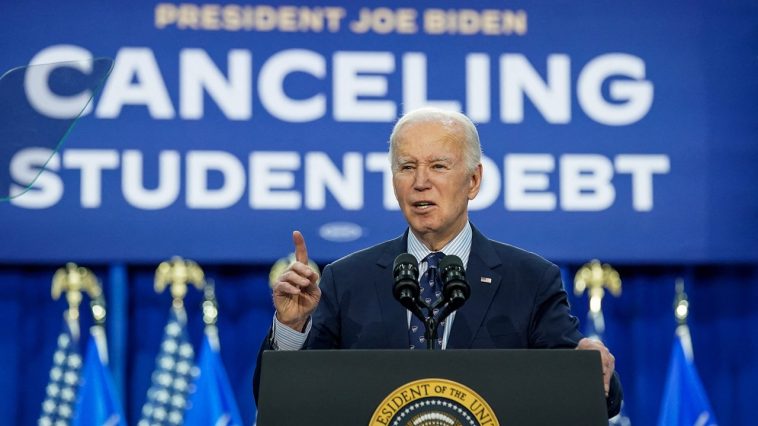This past week witnessed another move by our current administration, the Biden White House, towards discharging student loans. It was announced that $7.7 billion will be lifted off the shoulders of 160,000 borrowers; $7.7 billion that, however, is to be absorbed by taxpayers. This forgiveness is a product of the Saving on a Valuable Education (SAVE) plan, combined with an income-driven repayment plan and the Public Service Loan Forgiveness initiative. Collectively, these actions have nullified $167 billion of student debt, affecting five million Americans since the administration commenced.
President Biden commented on this, stressing his commitment to making higher education a vehicle for reaching the middle class rather than an impediment to expanding opportunities. ‘From the first day, I vowed to tirelessly seek ways to dissolve student debt’, said Biden, seemingly undeterred by the opposition from Republican-elected representatives. He didn’t specifically indicate that he anticipates backlash, though it is suggested that he’s prepared to counter objections.
Through the new income-driven repayment plan, the administration plans to provide respite to 54,000 borrowers. The Public Service Loan Forgiveness is expected to come to the aid of another 67,000 borrowers, while existing income-driven repayment plans will absolve the loans of an additional 34,000 people. This is said to be the latest series of measures following last year’s Supreme Court ruling labeling previous attempts to cancel $430 billion in student loans as unconstitutional.
The White House, however, has been surmising alternative strategies since that ruling. Some might argue this seems like an effort to appeal to younger, progressively leaning voters by cancelling their debt, albeit with the consequence of redirecting that burden to the nation’s taxpayers.
Earlier this year, the president’s SAVE Plan was met with opposition from states led by Republicans. They lodged a lawsuit against the administration, challenging the constitutionality of the plan, which was inaugurated in 2022 and has since discharged loans for over 150,000 Americans.
Kansas Attorney General Kris Kobach spearheads the said opposition and has clarified their perspective during a press conference. According to Kobach, the President doesn’t have the authority to take independent action in regard to this matter. ‘Despite this, the president has proceeded unilaterally, audaciously,’ said Kobach.
The law, Kobach pointed out, does not permit President Biden to enact what he is attempting. This viewpoint seems to echo those of many citizens who argue Biden might be overstepping his bounds.
All this, as Biden appears to persist in finding every available legal loophole to pardon student loans without needing congressional consent. However, it seems that the younger section of the populace is not quite inclined to accept their debt being excused.
A recent poll conducted by CNN indicates a significant decline in the president’s popularity among 18 to 34-year-olds, compared to his approval during the 2020 campaign. Surprisingly, it showed Trump leading over Biden by 11 points among this age group when the survey was conducted.
As the current administration is exploring means to forgive student loan debts, the load on taxpayers seems to be perpetually on the upswing. There are worries that, in doing this, the administration is putting the interests of young borrowers ahead of working-class Americans.
Particularly, some might suggest the administration seems to be placing those young borrowers who partook in anti-Israel demonstrations on college campuses over the hard-working individuals who once formed the core of the Democrat alliance.
This sentiment seems to be causing a significant portion of the said demographic to gravitate away from the Democratic party and toward Donald Trump.
Although this comparison between previous administrations and the present one is worthy of discussion, it also serves as a reminder of the continually evolving political landscape and how individual policy decisions may have unforeseen impacts on the nation’s demographic.
Going forward, it will remain crucial to strike a balance between debt relief policies and their subsequent impact on the taxpayer base — a challenge we, as a nation, should continue to navigate deftly.


